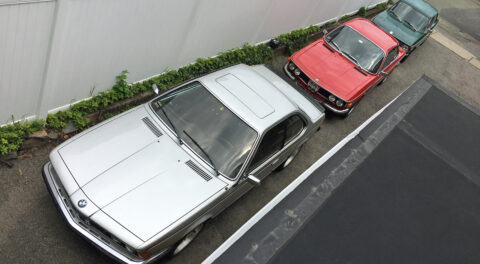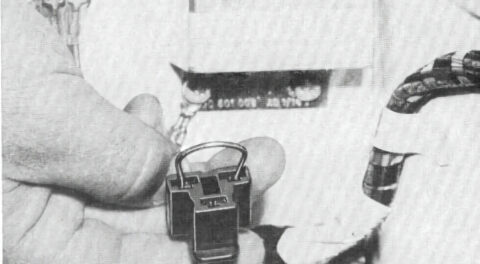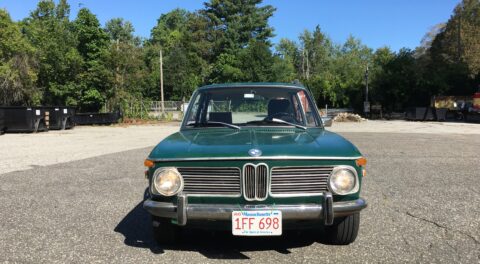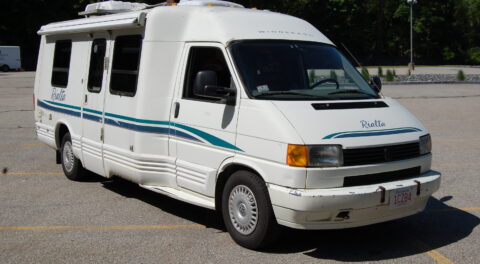When my garage was built fourteen years ago, it was an exercise in what was possible. The City of Newton had shot down my free-standing-garage proposal because it impinged on the rule of a four-foot setback. The 31′-by-17′ attached garage was the largest structure that I could build and respect the setback, as well as staying under a rule for maximum house-to-property ratio.
The garage is attached to the house with a partial overlap, making it so there’s a single-width roll-up door through which the cars have to come through. There is also a double-width roll-door on the right side through which I thought I would hang a hard-J turn and put one car sideways in the back, but as it happens, I’ve never used it that way. Instead, shortly after the garage was built, I pulled two cars in nose-to-tail—probably the Porsche 911SC and the Z3 M coupe—and found that they fit easily that way. Ecstatic, I asked my friend Alex, who’d built the garage for me, “Were we smart and designed it that way?”
He laughed. “No,” he said, “it’s accidental. That only worked because you pulled in two short cars. Try that with Maire Anne’s minivan and the 3.0CSi and they won’t fit.” He was right.
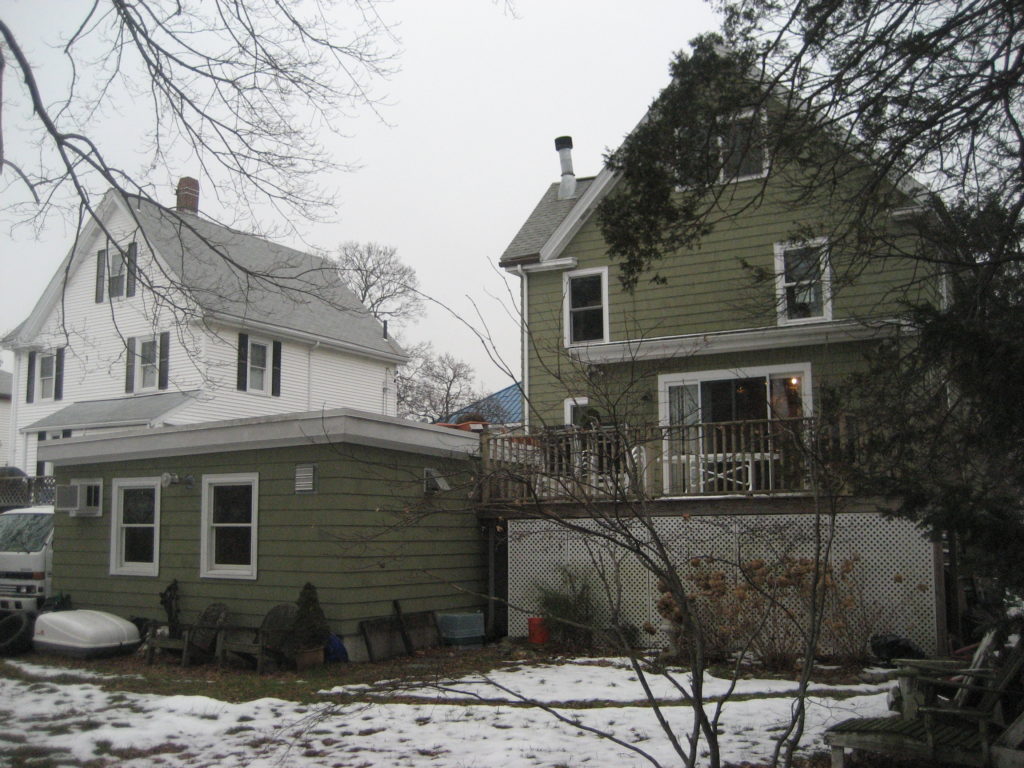
The attached garage as viewed from the back of the house.
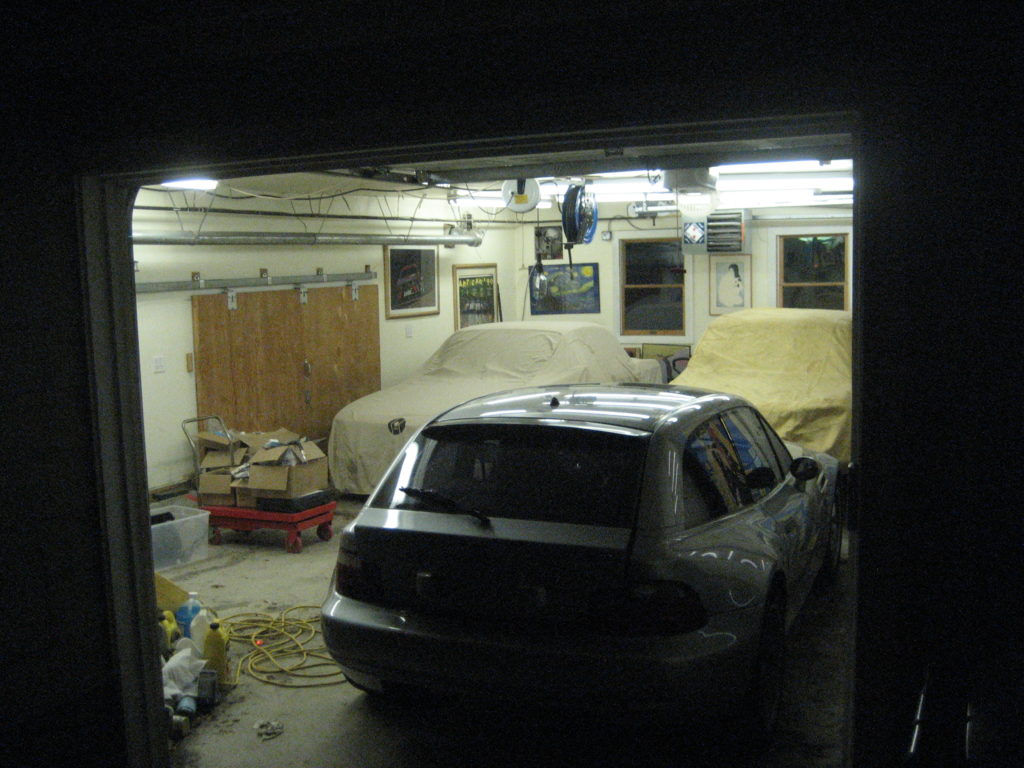
The view through the single roll-up door before the garage got overrun by junk.
The cars-in-line orientation immediately became the way the garage was used. What’s more, not long after, I bought the mid-rise lift and discovered, also quite by accident, that an unintentional benefit was that if one car was up on the lift, it allowed me to tuck the nose of a longer car in under it, essentially removing the length limitation.
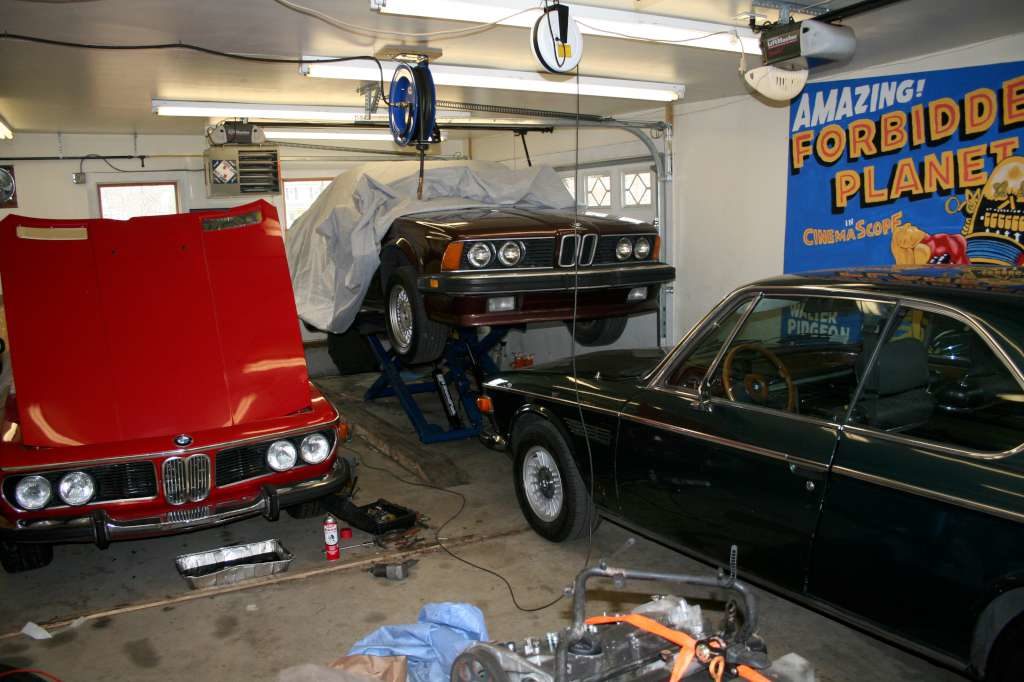
The mid-rise lift allowed longer cars to fit lengthwise.
Fitting a car into Space #3 at left rear required that you to pull out the car immediately in front of the roll-up door, remove the pile of crap that invariably would accumulate in the fourth space to the left of the door, and do a dog-leg turn. Obviously it would be preferable if each car had its own roll-up door, but hey, I’m not complaining.
Well, maybe just a little.
The Grail became figuring out how to easily put in a fourth car. While you could drive a car into the space in front of the roll-up door, put it on wheel dollies, skooch it to the left, and then pull in another car, this was complicated by the fact that for drainage reasons, the garage floor has a slight downward slope to it. When I bought wheel dollies and first attempted this maneuver, it was immediately obvious that it could not be done safely, as the car began skateboarding down the southern inclines with alarming momentum.
I came up with a solution: I bought some 2″x1/2″ strips of wooden molding and anchor-bolted them to the floor. This provided a stop for the wheel dollies. However, I found that this created an unanticipated problem: Instead of run against the molding, which was supposed to act as a guide for the wheels of the dollies, the wheels invariably swiveled and dug into the wood. It was impossible to simply roll the car along the “track” as I’d imagined.
The solution to the problem was a Warn PullzAll, a 120-VAC portable electric winch. I’ve since used the PullzAll for any number of things, including winching cars up onto trailers and pulling cylinder heads, but I had in fact bought it specifically for what I termed “the Electric Slide”—dragging a car on wheel dollies into Space #4. Through trial and error, I found that when I sank a lag hook into one of the beams close to the floor at about the midpoint of the car and connected the PullzAll to it and the left wheel dolly, it pulled the car not only left, but also slightly back up the incline, which eliminated the problem of the wheels binding against the wooden strip.
I stored cars that way every winter from when the garage was built in 2005 to 2013. Of course, with the cars packed in there, it wasn’t as easy to work, but, like the garage itself, it was a triumph of the achievable.
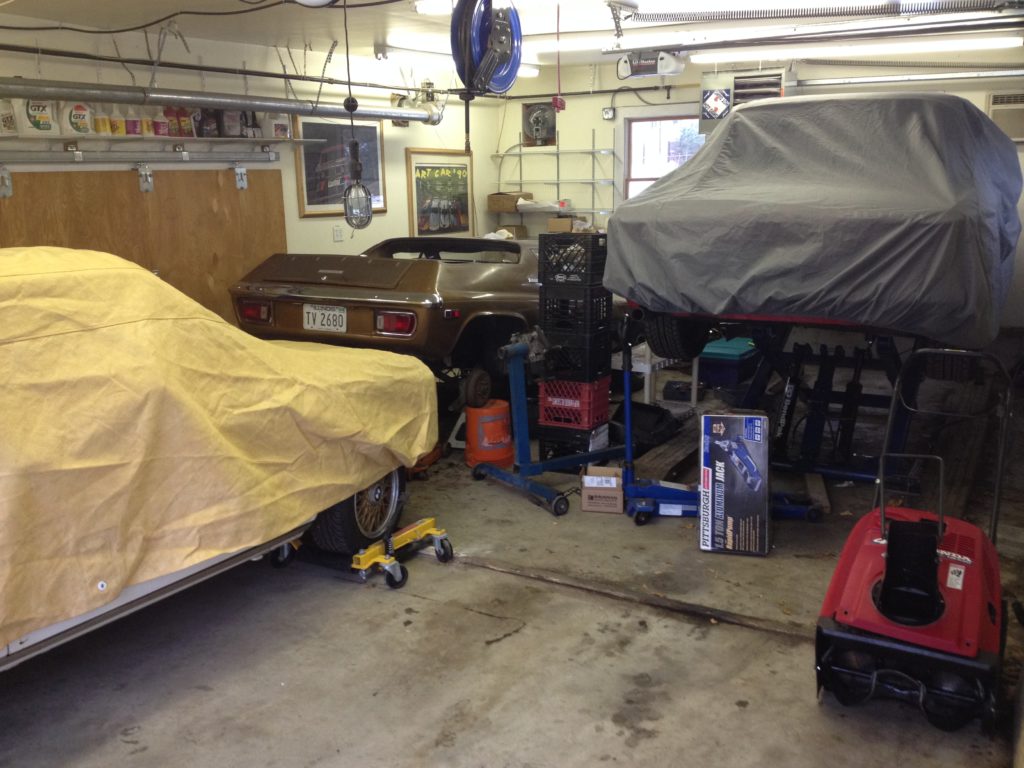
A 2002tii on wheel dollies slid into in the fourth space. Note the wooden strip bolted into the floor.
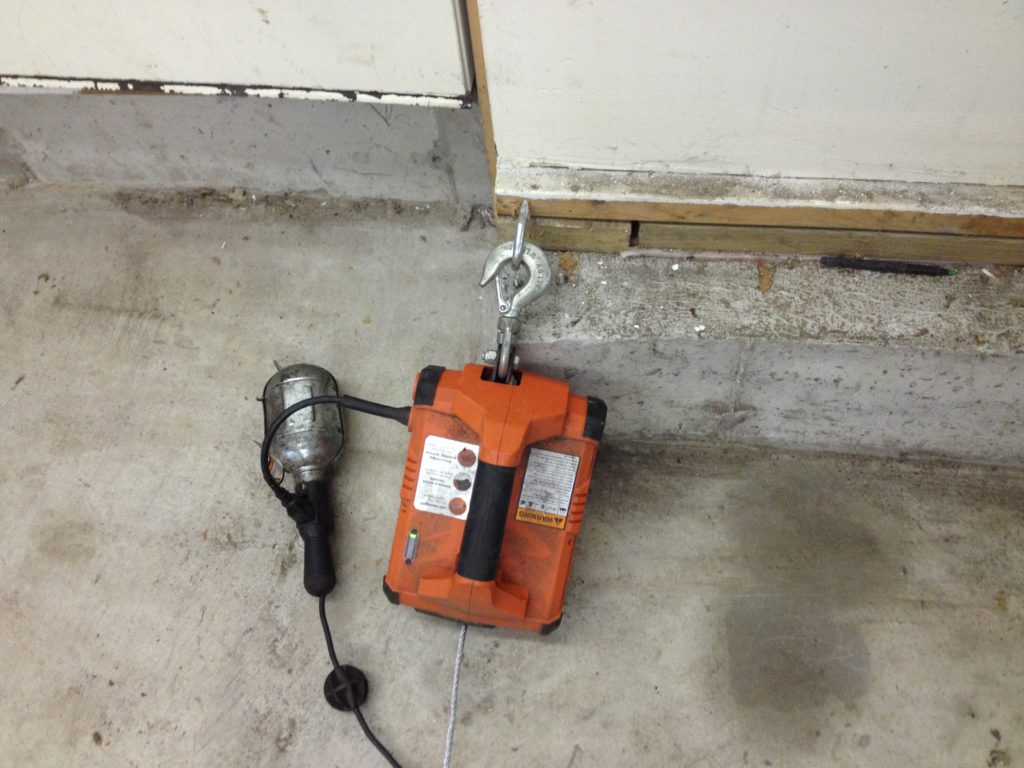
The Warn PullzAll supplies the grunt for the Electric Slide. (This was back when you still could see the garage floor.)
For about eight years, the number of my cars has hovered between ten and fourteen. As I’ve written before, in order to accommodate them, I began renting inexpensive garage space out in Fitchburg. But the big disruption was buying the ’74 Lotus Europa Twin-Cam Special in 2013: I rolled it, with its seized engine, into that back left #3 space. In one feverish weekend after the purchase, I pulled the drivetrain and tore down the engine. Anyone who has done this knows that it makes the volume of a car explode; suddenly, the dead little Lotus occupied not one garage space, but two. In addition, other project work would also spill into the fourth space.
It would be six years before I could do the Electric Slide again.
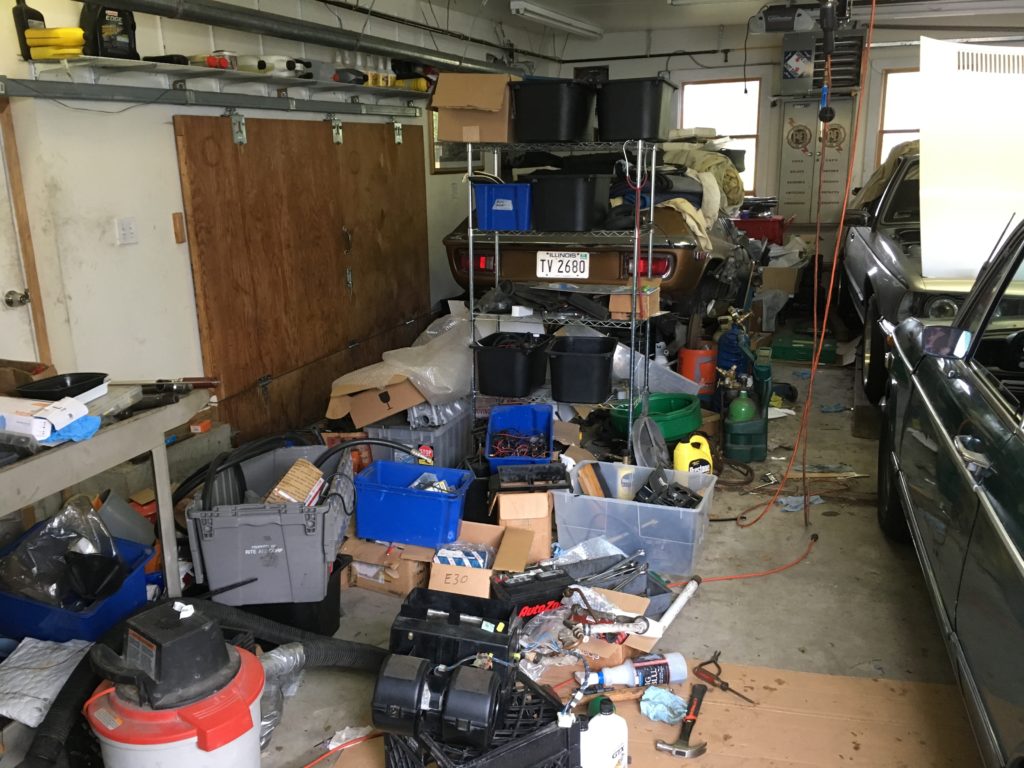
The fourth garage space attracts clutter like nothing else on Earth.
This fall, I sold Kugel, my long-held ’72 2002tii, but I bought Hampton, the 48,000-mile ’73 2002. Then I retrieved Louie, my other ’72 tii, from his sojourn at Lance White’s place in Cincinnati. So there was a net increase of one must-garage-over-the-winter car. Although I’d gotten the Lotus running last spring, the clutter generated from its lengthy resurrection was like the aftermath of a retreated tsunami.
When I started the Lotus project in 2013, I bought a used two-level plastic shop cart. It initially was a mobile workbench and repository for Lotus-specific parts, but you know how this goes: Eventually it just became a home for crap. So task number one in reclaiming Space #4 was to get rid of the shop cart. I cleaned it off and banished it to beneath the back deck.
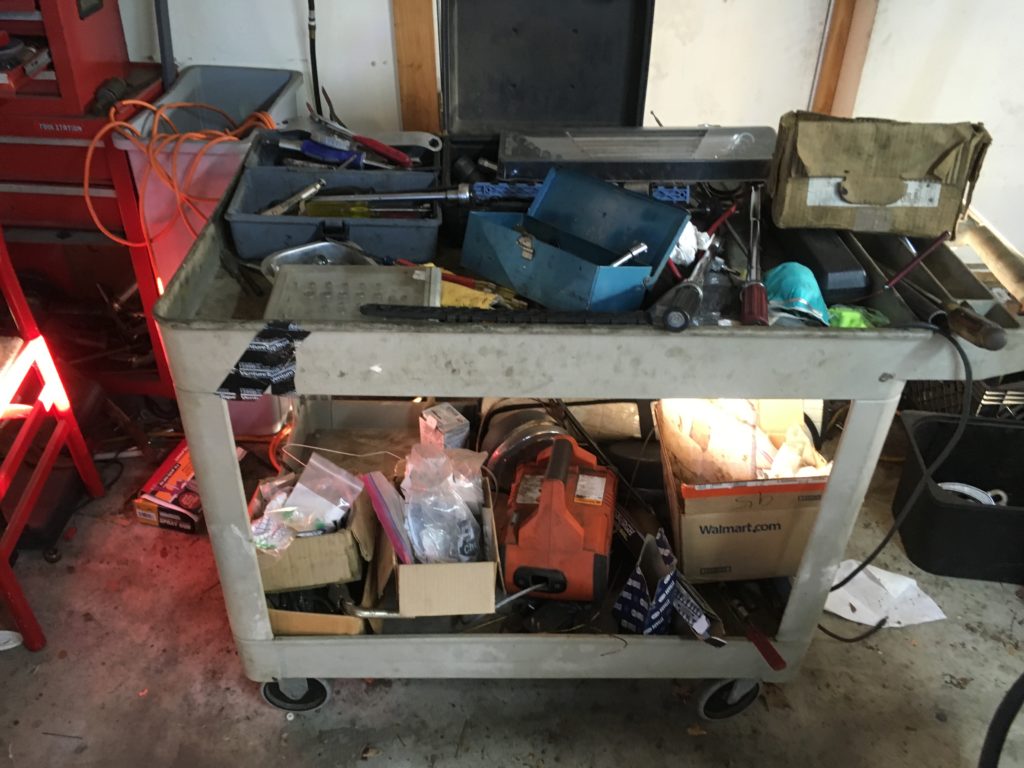
The cart was handy, but it had to go.
Next, I doubled the amount of wire shelving I had. This was essential in order to get stuff off the ground (anything directly on the garage floor is your enemy). After a few cleaning sessions, I was able to clear and sweep the spaces that the wheel dollies needed to slide on.
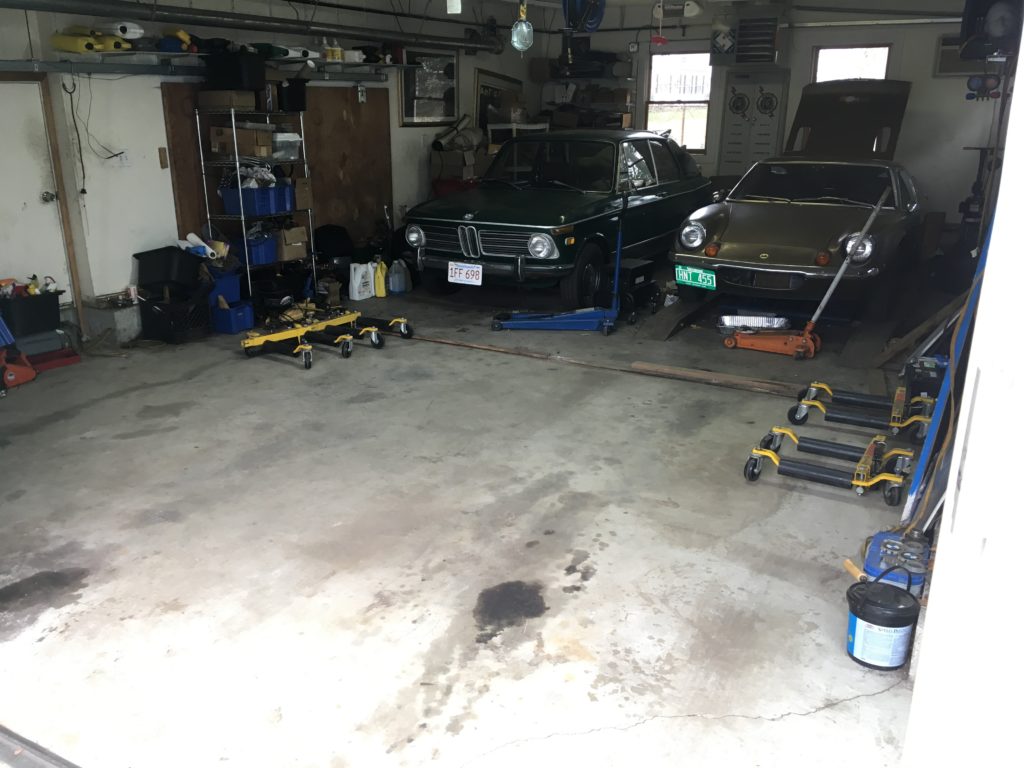
This was more floor than I’d seen in years.
Next was deciding which cars I wanted in the garage over the winter. They were the Lotus (I have a long list of over-winter projects to do on it); Louie, the ’72 tii with its JB-welded cracked head; Hampton, which is in need of an engine-compartment detailing to ready it for a spring sale; and WARP9, the 3.0CSi, awaiting the installation of a period-correct Blaupunkt radio.
I knew from experience that the two 2002s would fit nose-to-tail. I test-fit the Lotus and the E9, and verified that there was sufficient room even without raising the Lotus on the lift. This was helpful, as I was going to need to walk around the Lotus to rebuild the front end, and I’m getting a little old to limbo.
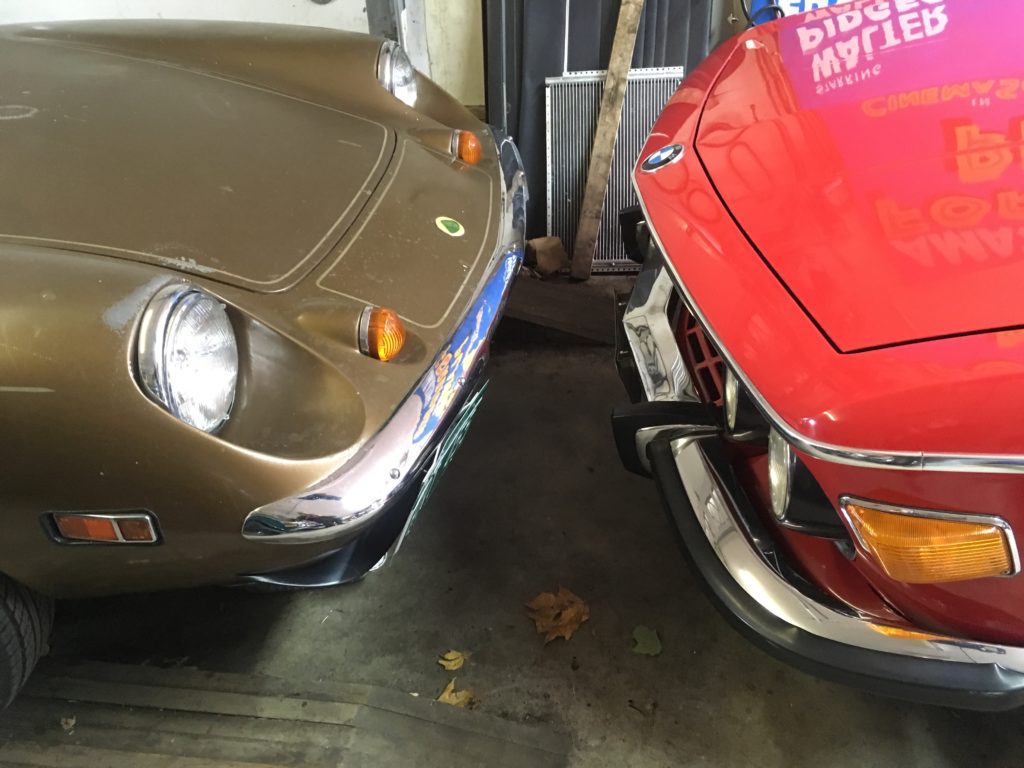
As Austin Powers said, “Grrrr, baby.”
On the one hand, once I put the two cars into position on the left side of the garage, they’re locked there for the duration of the winter, so those that are there had better be ones you don’t need to move, whereas the ones on the right side can be driven in and out of the garage if necessary. On the other hand, once that garage door comes down, winter begins dumping snow, and the snowblower begins spraying it around the driveway—and nothing moves in or out of the garage for months, so from a practical standpoint, there’s not much difference.
So Hampton did the Electric Slide, essentially locking him and Louie in until spring.

Hampton and Louie will be locked eyeball-to-eyeball until the snow melts.
Then in came the E9.
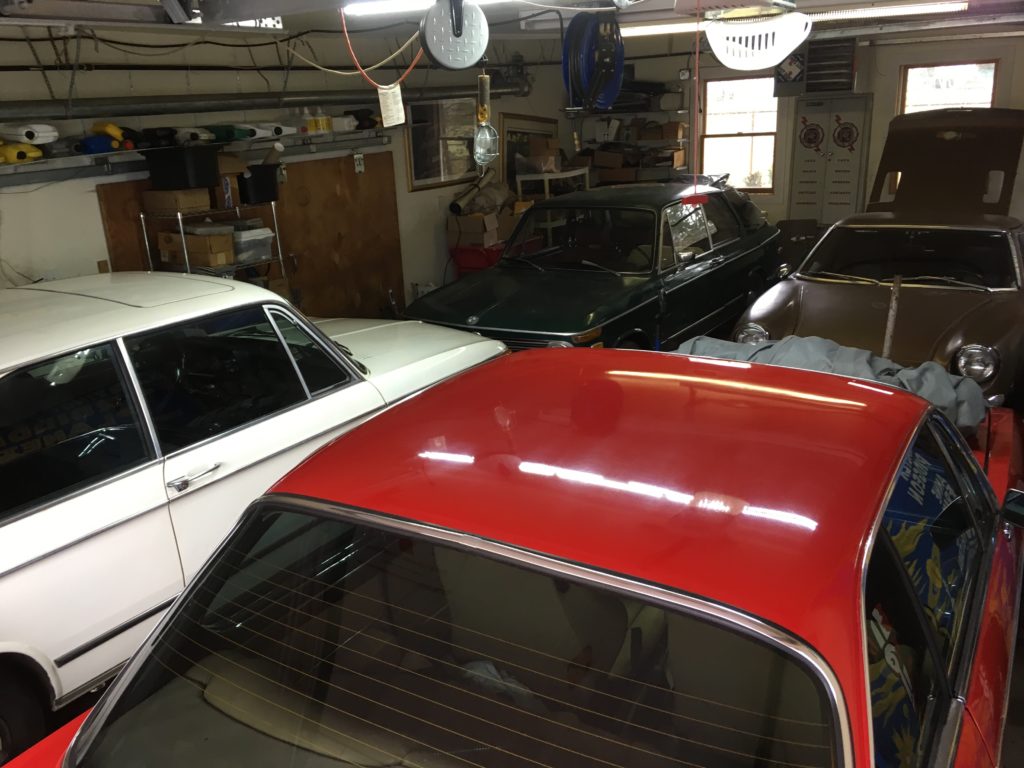
Damn, that’s tight! Yes, they’ll all be covered. I’m not a Philistine, you know.

Another view.
One thing I had forgotten, though, is how close a car is to the basement door when it’s slid into Space #4. It startles me every time I go to step into the garage.
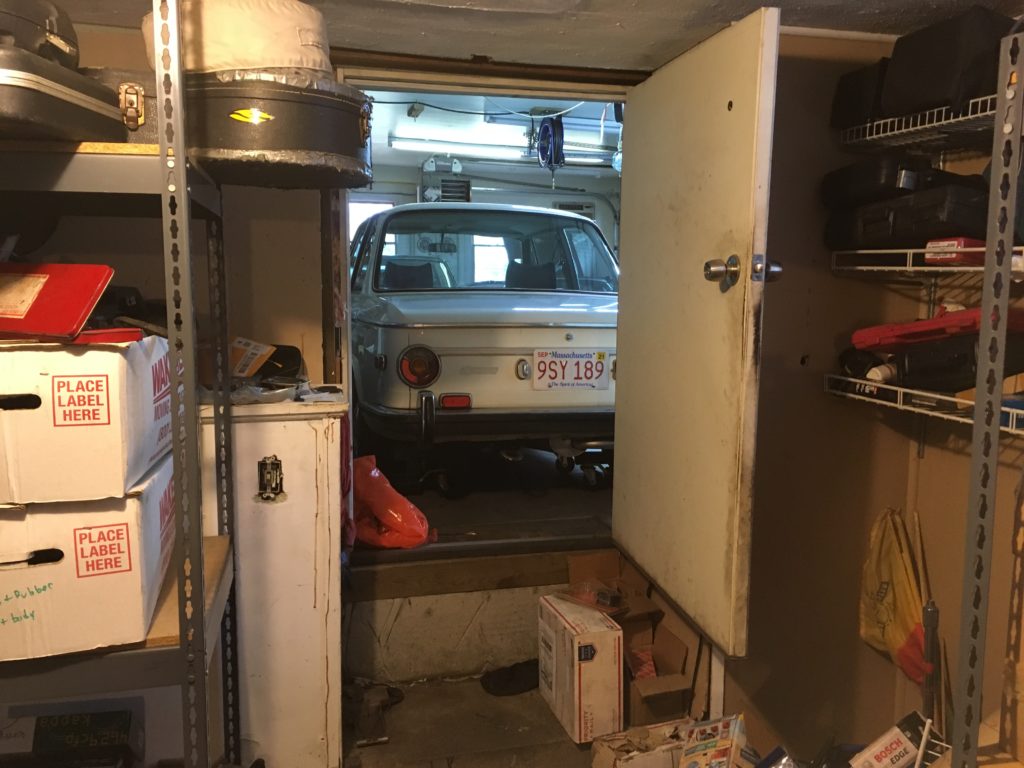
Hello!
So, it’s done. My babies are packed in for the winter like sardines. It’s not an optimal situation; if Bluto, the 270,000-mile X5 (ostensibly now my daily driver) needs repair during the next few months, it may require actually paying someone else to fix it—I know: Oh, my god, right?
But I’d be churlish to complain about having an attached four-car garage. After all, we were smart. We designed it this way.—Rob Siegel
Rob’s new book, Resurrecting Bertha: Buying Back Our Wedding Car After 26 Years In Storage, was just released and is available on Amazon here. His other books, including his recent Just Needs a Recharge: The Hack MechanicTM Guide to Vintage Air Conditioning, are available here on Amazon. Or you can order personally-inscribed copies of all of his books through Rob’s website: www.robsiegel.com.


